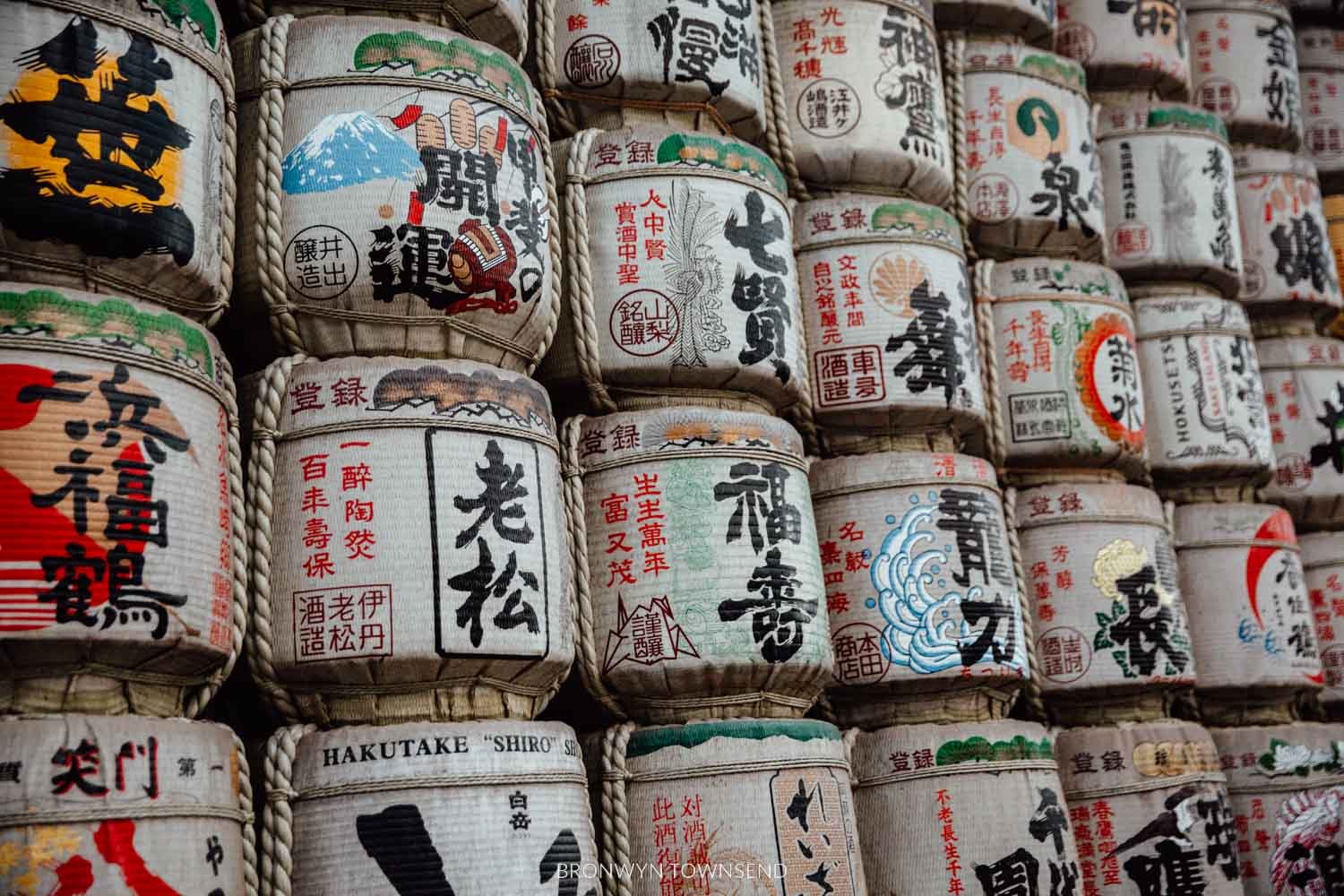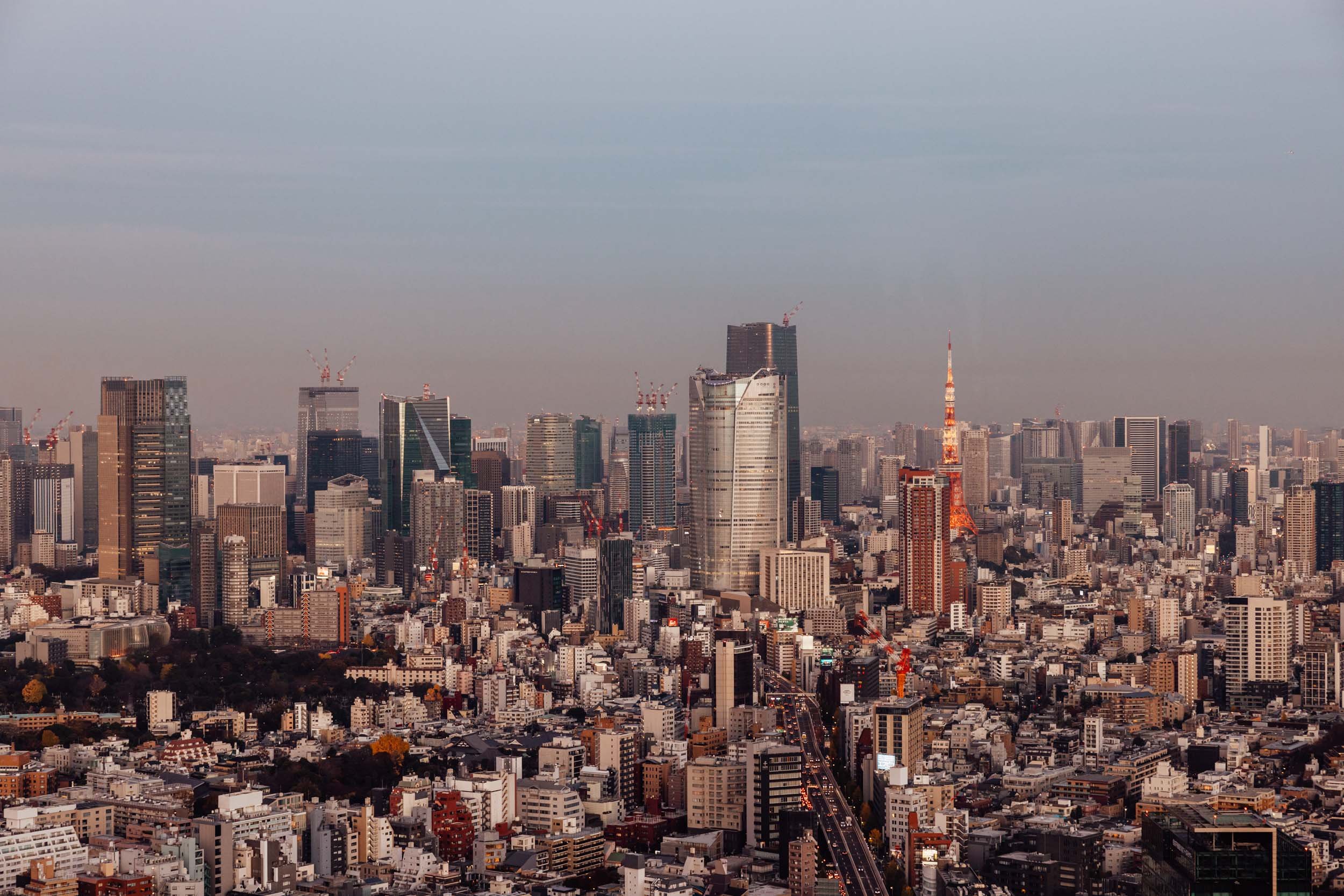Japan Packing List: What to wear in Spring
Not sure what to wear in Japan in spring? Then this is the perfect guide for you. Find out about what to expect in each month of spring and across different regions, and use my recommended Japan spring packing list to plan your own.
April in Okayama.
If packing for spring in Japan feels like a monumental task, it doesn’t need to. Considered one of Japan’s most celebrated periods, what you need to pack typically depends on which month and which region you’re travelling to.
After spending a full spring from mid-March to mid-June across 19 of Japan’s prefectures, I can help you prepare your own packing list. The biggest piece of advice I can give is that layers are your best friend. In mid-March I experienced light snow in Osaka one day, and three days later I was waltzing around town in a t-shirt and jeans.
Above all else, the trick is to pack smart. You don’t need a completely different outfit every day. Mixing and matching is best, and lots of hotels have coin washing machines and dryers available so you can do laundry.
In March, weather is still frosty in Hokkaido and northern Honshu, while it’s a mixed bag in central and southern Honshu. Kyushu is slightly ahead when it comes to thawing out for winter with cherry blossoms starting to bloom from mid-late March. Jeans or long pants and a mix of layers for the top is most sensible at this time.
Kurashiki in April.
Naoshima in April.
Come April, the days are warmer, and jackets are likely spared for much of the day by the middle of the month. However, if you’re in the north or the central alps, warmer layers should be in the mix. You’ll begin seeing azaleas and wisteria creating colourful pockets on street corners, across shrine and temple grounds, and being a major drawcard to visit gardens.
I spent a lot of time in Okayama, Kansai, and Hyogo during the middle of spring exploring places like Naoshima, Kurashiki, and Kinosaki Onsen and jeans or a skirt with a light jacket worked best. April is also when things start becoming warm enough for swimming in subtropic Okinawa, and it will feel like early summer is well on its way.
May is when the weather generally warms up quite a bit, and cherry blossoms finally finish their annual bloom in the north in Hokkaido. Don’t skip bringing at least one warm option for May though, as I still had a mix of cooler days when a light jacket and jeans were necessary.
In this what to pack for spring in Japan guide, I provide details on the spring season in Japan, a recommended packing list, and insight into the type of luggage you bring and how to get around with it.
March in Kobe.
Early May on the Nakasendo Trail.
When is spring in Japan?
Spring in Japan runs from March to May, and it’s one of the most popular times of the year to visit. Spring is sakura (cherry blossom) season, which usually begins in late March or early April in Honshu to May in Hokkaido. But you’ll also find an array of other spring blooms, including wisteria, azaleas, and iris blooming making it an ideal time to mosey through Japan’s beautiful gardens.
Weather in Japan in spring
Spring is one of the most celebrated seasons in Japan, bringing a welcome shift from the cold of winter to milder, warmer days. Temperatures gradually rise from March through May, but because Japan stretches from northern Hokkaido all the way down to subtropical Okinawa, the change in weather unfolds differently across the country.
Fukuoka.
In the north, spring arrives slowly. Hokkaido can still feel wintry in March, with chilly mornings and the occasional snowfall. By contrast, central Japan, including the popular Golden Route (Tokyo, Kyoto, and Osaka) enjoys crisp but comfortable days, with cherry blossoms typically blooming between late March and early April. Further south in Kyushu, spring tends to settle in earlier, bringing warmer afternoons and fewer cold snaps.
Okinawa experiences spring more like early summer, with balmy temperatures and a noticeably more tropical feel. By May, humidity begins to rise in the southern islands, while northern regions finally shake off the last of winter’s chill. The key to travelling in spring is being ready for variety.
Fukuoka.
What to wear in Japan in Spring
I spent three months in Japan from mid-March until mid-June and was wearing a mix of t-shirts and jeans with a puffer jacket to knitwear in March, and switched to a lighter jacket with jeans or skirts and dresses from around mid-April.
While most days are pleasant, weather can swing from brisk to warm depending on where you’re headed, making layers your best friend at this time of year. I recommend items that easily mix and match to minimise how much you need to bring.
My go-to outfits in spring were typically jeans with a t-shirt and jacket if necessary, or a midi dress/skirt with a top and sometimes a denim jacket. Because I clock up at least 20,000 per day on average, I tend to stick to sneakers and bring two pairs so my feet don’t get tired from the same pair (and because I have a hard time finding shoes large enough if they were to break!).
In Saga prefecture in April.
In Arita in April.
Japan spring packing list
So, what is on my recommended packing list for spring in Japan? With most hotels having washing machines available (check when you book), you shouldn’t need more than a week’s worth of clothing. The exception here is of course if you need any specialist equipment, such as hiking boots if you’re planning on something like hiking the Nakasendo Trail.
Here is a packing list for one week in Japan.
8-10 pair of underwear
2-3 bras
8-10 pairs of socks - make sure they don’t have holes and they match, if you’re visiting temples and ryokans you will be taking your shoes off a lot
2–3 short-sleeve T-shirts
1–2 light sweaters or cardigans
1 mid-weight jacket (trench, denim, or light puffer)
1 warmer coat (early spring or northern regions only)
2 pairs of casual trousers or jeans
1-2 skirts or dresses (plus tights if heading north)
1 compact umbrella
1 light waterproof jacket
1 hat and 1 pair of sunglasses
2 pairs of comfortable walking shoes
Optional
1 pair of gloves - ideal if you’re heading to colder climates such as Hokkaido
1-2 beanies - perfect for colder days
1 scarf
Swimwear - if you’re headed to Okinawa then by mid-April it will be warm enough to swim
Other general packing items
A small personal medical kit - include your go-to pain relief, antiseptic ointment, band-aids, and any permitted items you usually use at home (double check restrictions on cold and flu medications), as finding familiar products can be tricky.
All necessary chargers, plus an international power adapter if you require one.
A portable power bank to keep your phone and electronics running throughout busy travel days.
Your camera equipment if you plan on taking photos — don’t forget any preferred lenses.
Extra batteries and memory cards so you’re never caught short.
Your passport, along with any visas or entry documents you may need.
Late March in Kyoto.
May in Takayama.
What not to bring to Japan
Japanese fashion is admired worldwide for its elegance and attention to detail, and locals usually take great care in how they present themselves. When visiting, it’s best to be mindful of local customs and dress etiquette. Here are a few things to avoid wearing during your trip:
Worn or holey socks – Since you’ll often need to remove your shoes when entering temples, traditional inns (ryokan), and even some restaurants, make sure your socks are neat and free from holes. It’s considered poor manners otherwise.
Revealing tops – Japanese style tends to be modest, particularly outside of Tokyo or other large cities. Tops that expose the midriff or show a lot of cleavage may draw unwanted attention. If you do pack these, then avoid wearing them at temples and shrines, as these are religious sites.
Overly short skirts or shorts – While there’s no need to cover your knees completely, ultra-short hemlines are generally viewed as inappropriate in everyday settings. Opt for slightly longer styles that balance comfort with respect for local norms.
Bikinis – Although bikinis aren’t forbidden, you’ll notice that one-piece swimsuits are more popular in Japan, especially at hotel pools or beach resorts. Choosing a modest swimsuit helps you blend in better with local swimmers. If you have tattoos, then these are often subject to restrictions at hotel pools and beaches, so you may be required to cover them with a rash shirt or boardshorts.
Leggings as outerwear – In Japan, leggings are rarely worn as standalone pants. They’re typically used for exercise or lounging, not for daily outings. Instead, go for jeans, or casual trousers for a more polished look. I love a pair of wide leg pants when I travel, as they are comfortable and look great too.
Restricted medications – Certain prescription or over-the-counter drugs that are legal elsewhere might be prohibited in Japan. Before traveling, check the regulations and apply for any necessary approvals to avoid issues at customs.
Matsumoto in May.
Are suitcases or backpacks better in Japan?
You’ve got your packing list, but what should you bring everything in? Will a suitcase be best, or should you pack a backpack? While I usually am a fan of a backpack or rucksack, especially when I travel around Europe with all those cobblestone streets. In Japan, I prefer to use a suitcase.
‘But what about all those stairs?’ I hear you ask. I make the most of luggage forwarding services to lighten the load between hotels and just carry what I need. But large train stations have lifts, just look for the signs, and larger hotels usually have lifts too.
I prefer using a hardshell suitcase, as I purchase various souvenirs to bring home and want them to stay as safe as possible on the flight home. But, there’s no right or wrong way to pack, except I recommend not overpacking, as that’s the biggest regret you’ll have.
May in Takayama.
Kurashiki in April.
How hard is it to catch trains with luggage in Japan?
Japan’s rail network is often considered among the best in the world. It’s fast, efficient, and famously punctual. For travellers, it’s usually the most convenient way to get from city to city. However, navigating trains with luggage does come with a few things to keep in mind.
In major cities such as Tokyo, Kyoto, and Osaka, commuter and subway lines can become extremely crowded during peak hours. Moving through stations with suitcases during these times can be challenging, so it’s worth planning your journeys for quieter periods whenever possible.
For long-distance trips on the Shinkansen on the Tokaido route, travellers should be aware that larger suitcases are regulated. Bags with total dimensions of 160 cm or more (length + width + height) require an advance reservation in a designated oversized luggage seat. These seats are easy to secure through JR ticket machines or at station service counters.
If you’d prefer to avoid handling bulky luggage altogether, Japan offers an excellent luggage forwarding service (takkyubin). You can send bags from one hotel to the next, or even from the airport, and travel light in between. It’s a service I’ve been using consistently every time I go to Japan and recommend it to everyone.
You may also find these guides helpful with planning your Japan travel
Must-know things before visiting Japan
Seasonal packing guides | winter packing guide / autumn packing list
Osaka itineraries | 3 days in Osaka / 1 day in Osaka
All the best things to do in Kanazawa


















